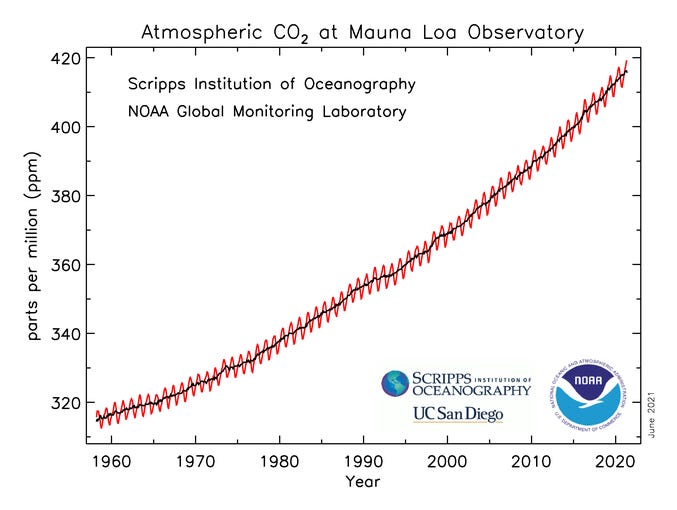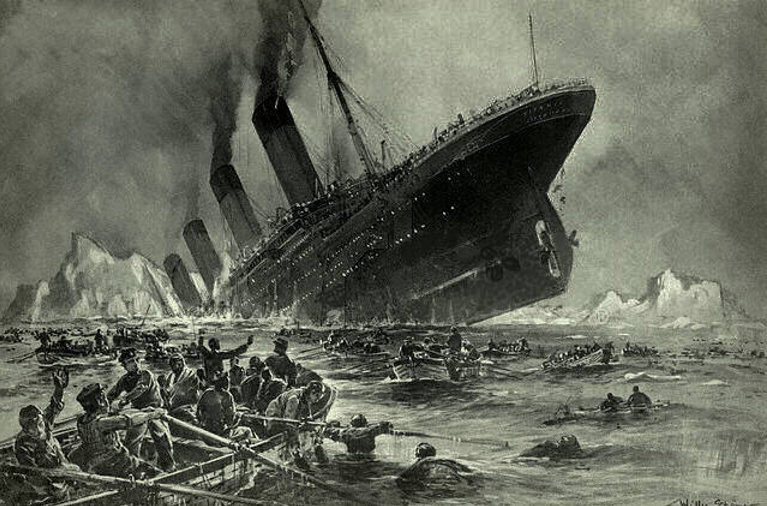Fatally flawed
As I sit down to write this, April 15, 2023, it is 111 years to the day since the RMS Titanic sank beneath the waves of the North Atlantic.
The largest moveable object humanity ever created, advertised to be unsinkable, it was the highest expression of the pride and hubris of the time. Torn open by an iceberg, over 1,500 of the over 2,200 on board drowned in the frigid waters. It remains one of the greatest disasters in maritime history.
The Titanic was the product of capitalist competition between the Cunard and White Star lines. The latter, owner of the Titanic, commissioned it to compete with Cunard’s world-leading Mauretania and Lusitania. White Star sought to do Cunard one better, creating the largest ship ever built, with a level of luxury second to none, carrying a gym, pool and high-end restaurants.
On its maiden voyage, Titanic carried a number of rich passengers including Benjamin Guggenheim, whose family accumulated their wealth mining the U.S. West; Isidor Strauss, owner of Macy’s, and John Jacob Astor, the wealthiest of the passengers and one of the world’s richest. Translated into modern dollars, his net worth would put him in today’s billionaire class. All would eventually go down with the ship. Hundreds of low-cost steerage passengers in the bowels of the ship similarly perished. But the head of White Star, J. Bruce Ismay, notoriously found his way onto one of the inadequately supplied lifeboats.
That not enough lifeboats were on board to save all passengers and crew was only one of the fatal flaws of the voyage. Another was that the supposedly watertight compartments that could be sealed off to make the ship “unsinkable” actually were not totally sealed from one another. Walls between them went only a bit above the water line, so when the ship started to angle down, water could slosh between them.
But perhaps the greatest and most ironic flaw was cheap rivets. Construction on the Titanic and two sister ships strained the supply of steel rivets. Pressed by its competition with Cunard to complete Titanic on time, the Belfast shipyard opted for rivets made with inferior slag-heavy iron. When the iceberg struck, the heads ripped off. It is thought that steel rivets would either have prevented a fatal slash of the hull, or at least limited it to slow the sinking enough for help to arrive, which it did later in the morning when Cunard’s Carpathia arrived in response to Titanic’s SOS.
The height of hubris
The Titanic may have been the pride of the British Empire, but behind it was the rising U.S. global economic empire. The White Star Line was actually owned by International Mercantile Marine, a trust whose largest owner was J.P. Morgan, the leading capitalist of the time. He organized many of the trusts that grew out of that era. Morgan was diverted from sailing on the maiden voyage by business matters. He might also have gone down with the ship. As it was, he died around a year later.
The Edwardian Era of the 20th century’s early decades was a time when Western Civilization was at the height of confidence. Two years before Titanic’s demise, British parliamentarian Norman Angell published The Great Illusion, arguing that the internationally connected nature of modern capitalism made war obsolete. It was indeed the first great age of globalization.
But a little over two years after Titanic went under the waves, Europe’s nations found themselves in a spiraling escalation toward World War I that none could individually control. By the time the guns of August 1914 went silent in 1918, around 20 million had perished, and an equal number had been wounded. The casualties included 1,195 passengers and crew on Cunard’s torpedoed Lusitania. The international order was shattered, as were the hubristic beliefs of the prewar period. Out of the war would come the rise of Hitler and World War II, the Russian Revolution which would lead to the Cold War, and conflicts which burn to this day in the Middle East.
Today, our world seems gripped by much that kind of uncontrollable dynamic, conflicts between great powers escalating with seemingly no off-ramp. While many point to the danger, noting that the threat of nuclear war is at least as great as during the 1962 Cuban Missile Crisis, and maybe greater, still few of us can conceive that current conflicts might eventuate in global conflagration. Like Angell we hardly can imagine the collapse of our interconnected global world. As on April 15, 1912, it seems business as usual will cruise on without interruption, despite the hubris of political leaders pushing for ever greater confrontation. To the guns of 2023 or 2024 or 2025.
The climate iceberg looms
Another iceberg looms before our Planet Titanic. Global climate disruption continues to intensify. The heat-trapping gases that cause global heating continue to concentrate in the atmosphere, and the rate is increasing.
“The global surface average for CO2 rose by 2.13 parts per million (ppm) to 417.06 ppm (in 2022), roughly the same rate observed during the last decade,” the National Oceanic and Atmospheric Administration reports. “Atmospheric CO2 is now 50% higher than pre-industrial levels. 2022 was the 11th consecutive year CO2 increased by more than 2 ppm, the highest sustained rate of CO2 increases in the 65 years since monitoring began. Prior to 2013, three consecutive years of CO2 growth of 2 ppm or more had never been recorded.”
The two other leading climate heating gases, methane and nitrous oxide, are also growing at near record rates after all-time measured increases in 2020 and 2021. Despite decades of climate conferences, reports and policy tinkering, carbon pollution continues to increase inexorably. Much is made of current national climate commitments, but looking at the past record one has to be skeptical.

The recent scientific assessment by the Intergovernmental Panel on Climate Change concludes, as World Resources Institute reports, “Already, with 1.1 degrees C (2 degrees F) of global temperature rise, changes to the climate system that are unparalleled over centuries to millennia are now occurring in every region of the world, from rising sea levels to more extreme weather events to rapidly disappearing sea ice.”
Staying under the 1.5 degree C limit set as a goal by the Paris Climate Conference in 2016 would require that climate pollution peaks in 2025 and diminishes 43% by 2030. In a world where global conflict has shattered any chance for agreement between China, the largest polluting nation, the U.S., the second, and Russia, the fourth, Planet Titanic is steering in the other direction, straight toward the climate iceberg.
Morgan funds Planet Titanic
Some of the icebergs looming before us are literal. It is thought that the Titanic was sunk by one that calved off of Jacobshavn Isbrae, one of Greenland’s great glaciers. Today it is source of around 10% of icebergs plunging into the sea from Greenland, and one of the fastest moving on Earth. The rate doubled from 1996 to 2005. Freshening caused by melting icebergs diminishes the saltiness that causes Gulf Stream waters to sink, thus hindering the mechanism that drives the current. The North Atlantic circulation is now at its weakest point in at least 1,000 years, and scientists point to those calving icebergs as the source.
The collapse of the Gulf Stream would cause climate chaos across the world, intensifying extremes in Europe and storms in North America. Already the slowing is piling up warm water off the U.S. East Coast, where waters are heating faster than anywhere on Earth, adding to sea level rise already created by melting glaciers and threatening greater storms. In a supreme but predictable irony, one of the descendants of the Morgan trusts, J.P. Morgan & Chase, is the largest bank funder of fossil fuels since the Paris Climate Accords were signed in 2016, having invested $434 billion by 2022. J.P. Morgan financed the Titanic. J.P Morgan & Chase is financing the iceberg.
Despite all the warnings, Planet Titanic continues toward the climate iceberg. The passengers for the most part seem blithe to the danger, while captain and crew are paying insufficient attention. By the time a crew member sighted the iceberg up ahead at 11:30 pm April 14, 1912 and alerted the helm to steer away, it was already too late to avert the collision that would put the stern underwater a little under three hours later. That is what it seems like now, that when the world and its leaders finally wake up to the danger and try to turn course, it will be too late to stop Planet Titanic from a fatal crash.
One would hope the passengers would charge the bridge and seize the helm before the climate crash or the great war. The ship doesn’t have enough lifeboats, and a global system driven by competition between nations and economic interests has design flaws that will sink the ship unless the course is turned soon. But it seems too many of us are comfortably sleeping in our cabins, believing that the captain has matters well in hand. When it is clear the captains of the world do not, with great power conflict escalating seemingly beyond control, and the climate crisis mounting even as it is shoved into the background. This morning, 111 years after the great ship went down, and it looks like our world is on the same path, I have to say, I’m just angry. Angry at the fools who rule and the masses of people who go on in ignorance and complacency, as if this cruise can continue its fateful course indefinitely, when it clearly cannot.
Where do we get off this path? Or will we just go down with the ship? All I can say, musing this morning, is I just don’t know.
You can read more about the Titanic sinking here.
Teaser photo credit: “Untergang der Titanic“, as conceived by Willy Stöwer, 1912. By Willy Stöwer – Magazine Die Gartenlaube, en:Die Gartenlaube and de:Die Gartenlaube, Public Domain, https://commons.wikimedia.org/w/index.php?curid=97646





